Drone privacy laws around the world

As of 2020, the use of drones around the world is expanding. According to the Federal Aviation Administration, there are currently 1.7 million drones registered in the United States alone. Lawmakers have been faced with new and complex regulatory challenges to protect the privacy of ordinary citizens
The increased prevalence of drones has raised the prospect of pervasive surveillance by governments, companies, and individuals, and lawmakers are struggling to keep up with the advancing technology.
At least 143 countries have enacted some form of drone-related regulation. Drone laws around the world range from outright bans of the technology to relatively unrestricted flight. But most legislation focuses on how the drone is being operated, not the privacy issues they create.
Many of the privacy threats that concern lawmakers are speculative and rely on the technology of tomorrow, making it difficult to pass privacy-specific legislation today.
In the meantime, lawmakers have been able to pass laws concerning drone use. They are a first step to “privacy by design” legislation, restricting where and how a drone can be flown to minimize opportunities to violate privacy in the first place.
To support the effort to establish an international regulatory framework for drone legislation, we looked at drone operation laws in over 200 countries. Please be aware that the information provided is based on data collected in October 2020. It is important to note that laws may have been modified or new ones introduced since the time of this report. Therefore, it is crucial for you to independently verify and familiarize yourself with the current laws and regulations. It is essential to emphasize that this text does not constitute legal advice but rather serves as an informational overview to illustrate the evolving landscape of drone privacy laws worldwide.
Lawmakers around the world have responded to the growing use of drones in various ways. Some countries, such as Cuba, Iraq, Iran, and Kuwait, have outright banned the use of unmanned aircraft. Others have passed legislation allowing for more experimental use of the technology.
On every continent, at least one country allows drones to fly what experts term “beyond visual line of sight,” meaning the aircraft can fly to areas beyond the view of the pilot. Drone laws in Finland, for example, allow pilots to obtain a permit to pilot drones outside of their view as long as they have a visual observer present to assist in the flight.
To see how drones are being regulated around the world, we compiled data on drone-related legislation for 210 countries. We looked at drone-related legislation for specific countries and analyzed drone-related legislation from sources such as UAV Coach, RAND Corporation, UAV Systems International, and the Library of Congress.
We found that drone regulation in each country generally fell into one of seven categories:
- Outright ban;
- Effective ban;
- Restrictions apply (such as drone registration or licensing, additional observers required, no commercial usage, etc.);
- Visual line of sight required;
- Experimental visual line of sight (experiments where drone flight beyond the line of sight is allowed);
- Unrestricted (when flying away from private property and airports, under 500 ft/150metres height, and with drones weighing less than 250g);
- No drone-related legislation;
We assigned each country a category status based on its legislation as of October 2020.
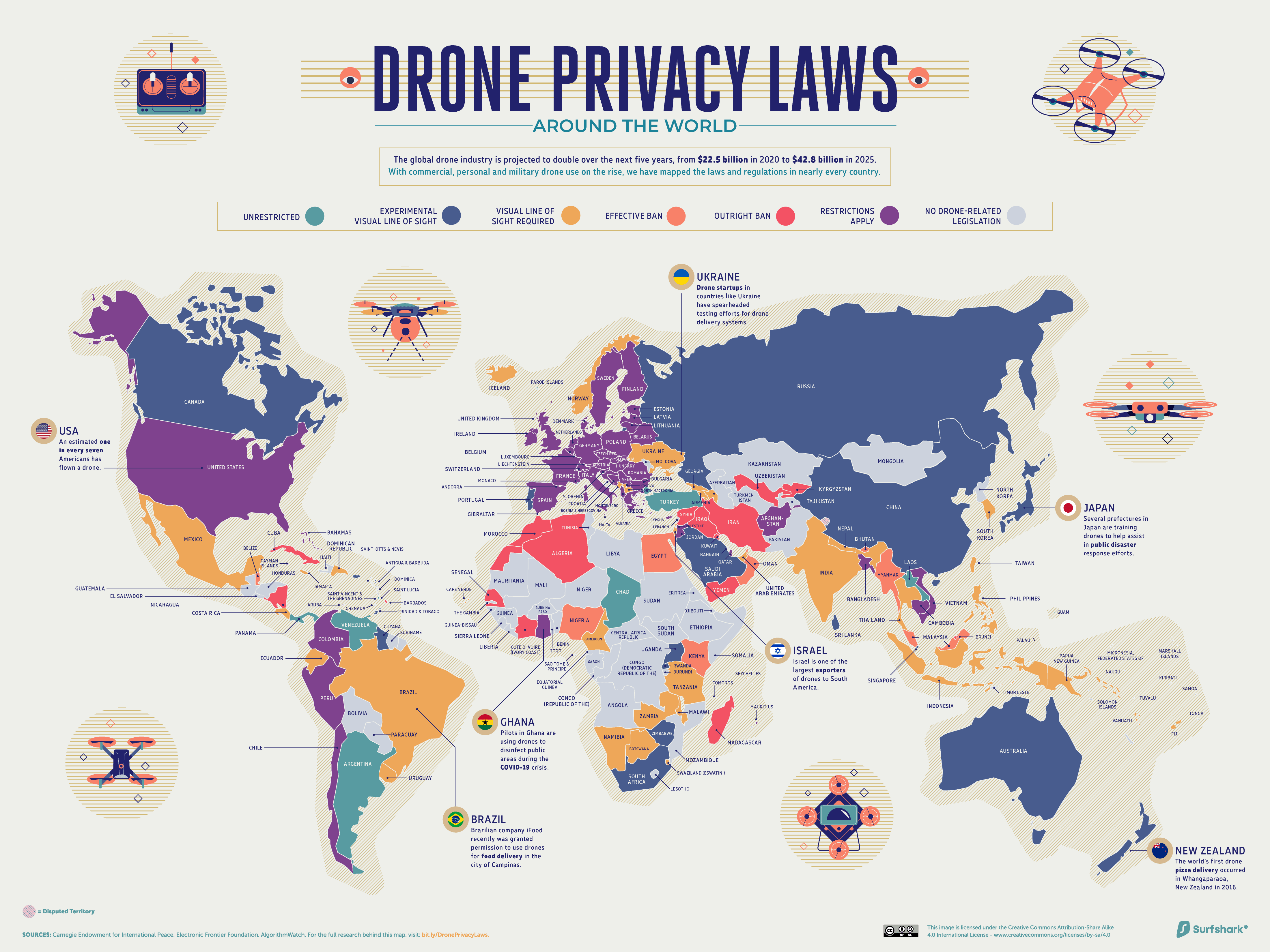

Europe
The European Aviation Safety Agency (EASA) has tightened the EU-wide rules for dronesin the EU and its other member states (Switzerland, Norway, Iceland, and Liechtenstein).
Different rules apply depending on the class of drone you are flying and where you intend to fly it. You need to register as a drone operator/owner if your machine weighs more than 250g and/or has a camera (or other data gatherer) attached.
EASA countries can also set their own rules and regulations with these limits. Drone pilots in Latvia, for example, are required to wear an identifying piece of clothing, such as a hat or a shirt. In Austria, pilots are required to get a license if the drone weighs more than 250 grams and flies higher than 30 meters.
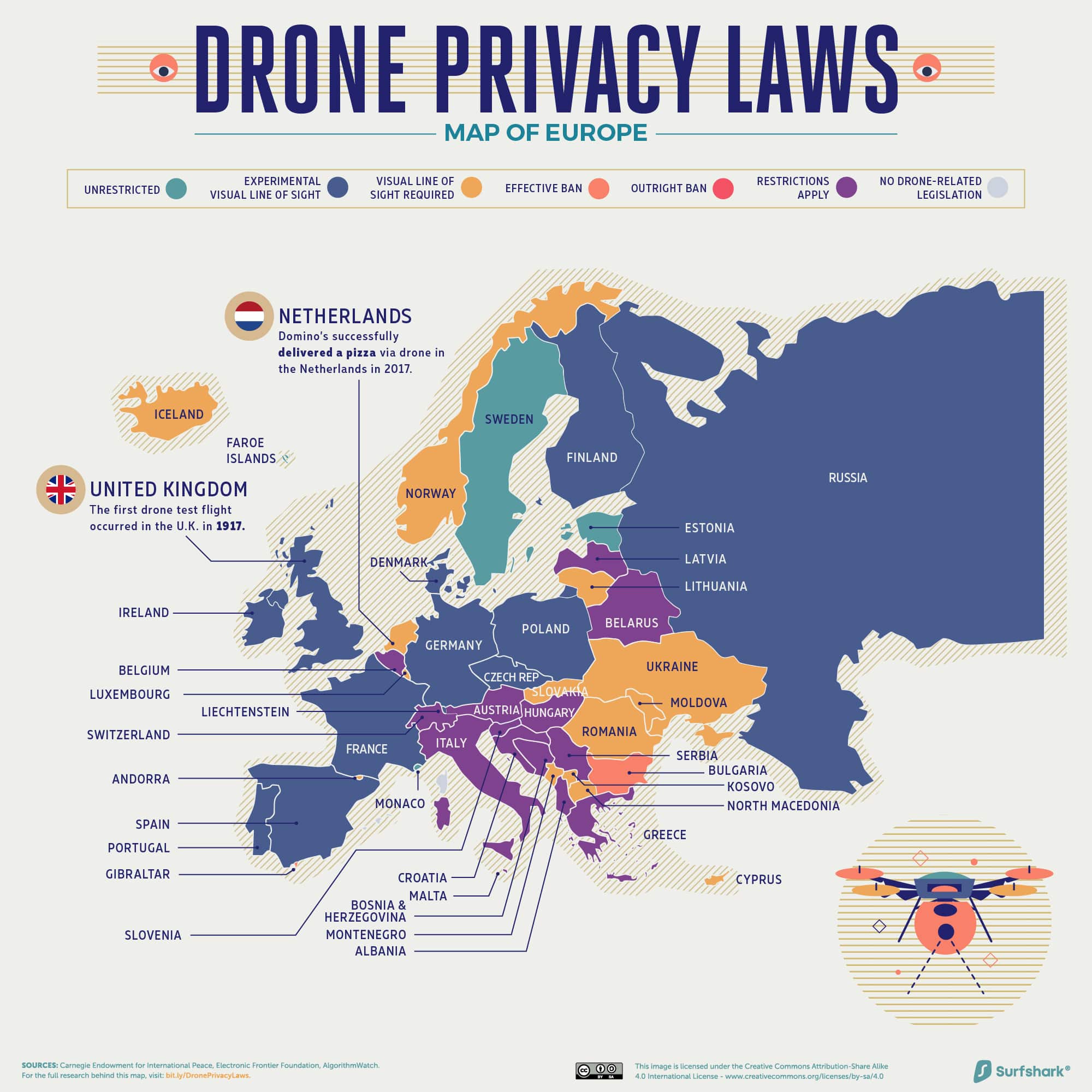

North America
While most countries around the world require pilots to be able to see the drone at all times, 33% of countries in North America allow for experimental drone flights beyond the line of sight — the largest share of any continent and far above the 22% global average.
Countries with experimental drone legislation include Canada, the Cayman Islands, Antigua and Barbuda, and other Caribbean nations.
The large number of countries allowing experimental drone flights relate to tech companies like Amazon, Walmart, and DHL, which are researching ways to incorporate drones into their delivery infrastructure.
The Federal Aviation Administration has issued new rules for drone users in the United States. The rules expand what’s possible (i.e., you can now fly over people or at night if licensed) but require that, by 2023, every drone in the sky should broadcast its identification number and the location of its pilot.
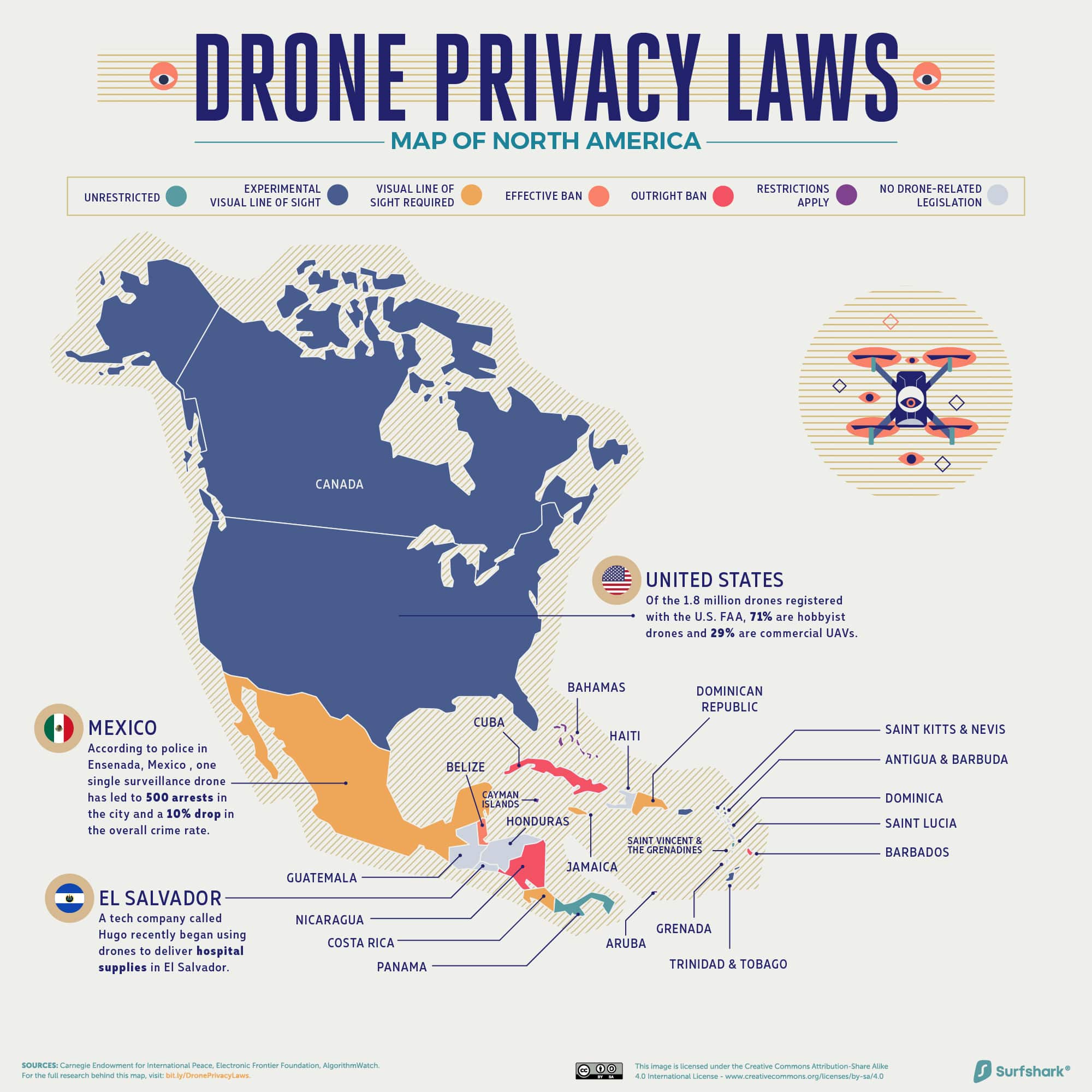

South America
67% of countries with drone-related legislation in South America allow drones to be flown as long as the aerial vehicle stays within the view of the pilot, the largest share of any continent.
No countries in South America have outright or effective bans on drones. But only one country, Guyana, has provisions that allow for flights beyond the line of sight — the fewest of any continent.
Other countries in South America have specific drone rules geared toward safety and environmental conservation. In Peru, for example, drone flights cannot last longer than an hour. In Ecuador, drones are completely banned on the Galapagos Islands except for approved scientific use.
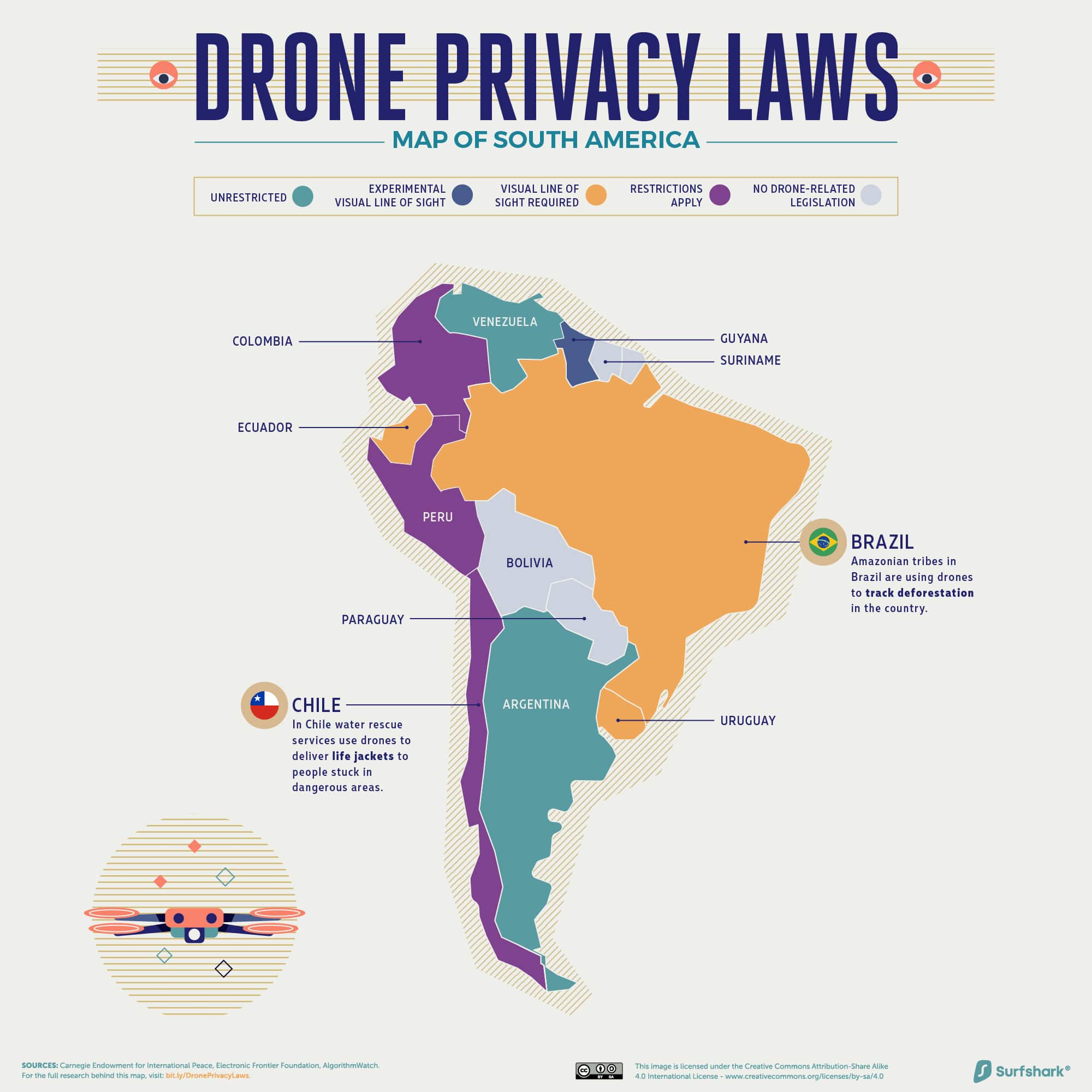

Middle East & Central Asia
21% of countries in the region with drone-related legislation have outright bans on drones. That’s more than the 11% global average and the second-largest share of any continent.
Additionally, there are a number of countries with effective bans on drones. In Bhutan, for example, drone flight is only allowed for government officers. Overall, 15% of countries in Asia have effective bans on drones, far more than the 8% global average and the largest share of any continent.
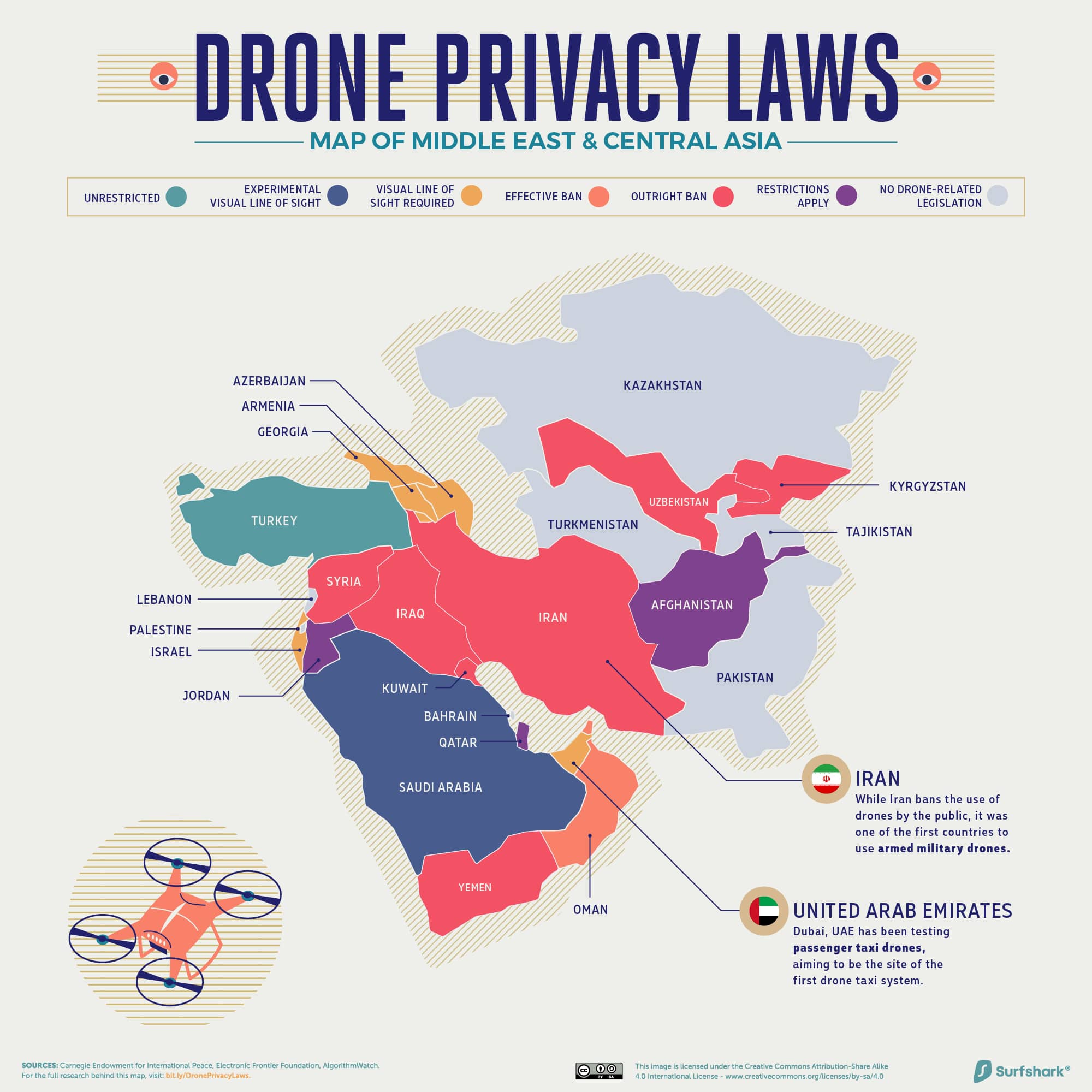

Rest of Asia and Oceania
56% of countries in Oceania have no drone-related legislation, the largest share of any continent. Of the countries that do have drone-related legislation, a majority allow drones as long as pilots stay within the visual line of sight of the drone. No countries have outright bans or effective bans on drone use.
In Australia and New Zealand, there are provisions for drones to fly beyond the visual line of sight of the pilot. Currently, licenses that permit drones to fly beyond the line of sight are limited to a few small aviation companies.
According to a RAND Corporation report on international commercial drone regulation, licenses for experimental flights beyond the line of sight are easier to obtain in Australia than in the United States.
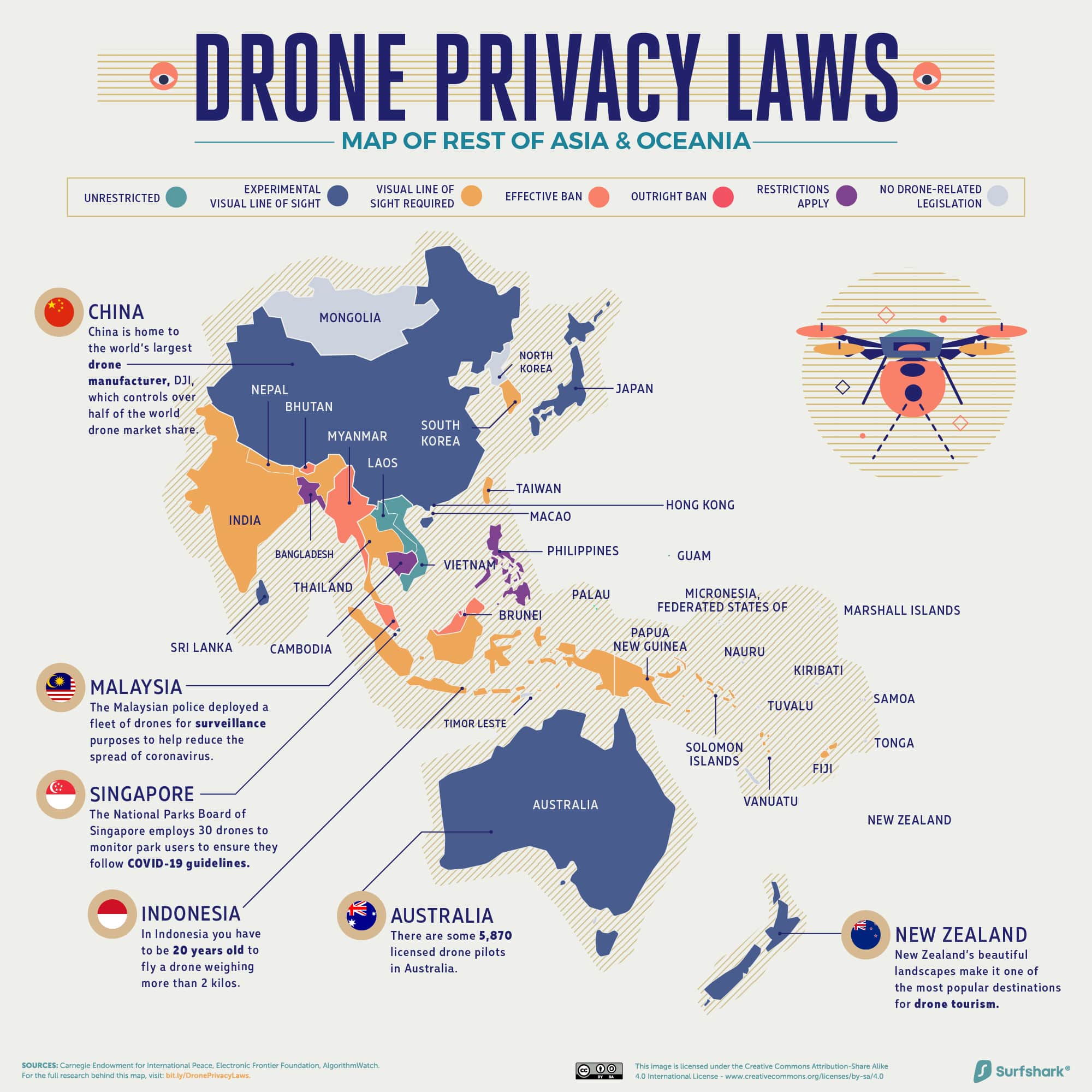

Africa
More than half of all countries in Africa have no drone-related legislation. Of the countries that do have drone-related legislation, 21% have an outright ban on the technology, the largest share of any continent.
Another 13% of countries have an effective ban on drones, the second largest share of any continent. In Egypt, for example, while drones are technically legal with permission from the Civil Aviation Authority, it is very difficult to obtain permission.
But while there are obstacles to drone flight in a number of African countries, there are also examples of innovation in the continent. In Ghana and Rwanda, drones are allowed to fly beyond the line of sight to deliver medical supplies to remote villages. Other African countries that allow drones to fly beyond the line of sight include Uganda and Zimbabwe.
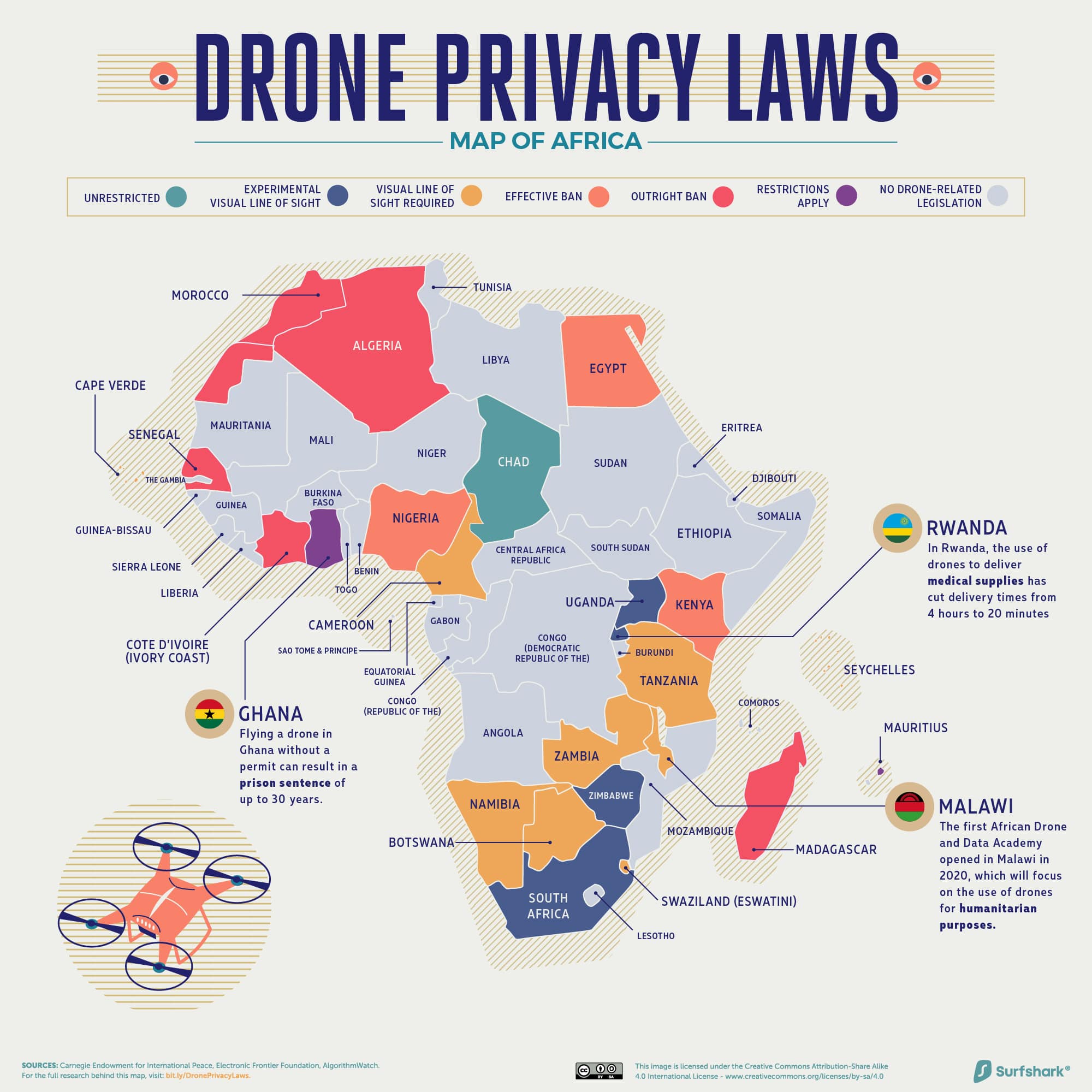

Demand for drone technology shows no signs of slowing down. According to the World Intellectual Property Organisation, the number of patents for drone technology is increasing rapidly — growing 34% from 7,076 in 2017 to 9,485 in 2018 alone.
As commercial technology for unmanned aerial vehicles continues to advance, it is important for the legislation regulating them to keep up. And until there is some international standard or governing body for the usage of drones established, it's fascinating to see how the regulation of drones differs from country to country around the world.
Keep scrolling down to see the full data from our study and to check the law where you live.
The Data
What can you do about your privacy?
There are a lot of different ways to take care of your privacy. As a company that offers privacy protection and online security solutions, our aim is to inform you about all the ways your privacy is compromised.
Especially now that we live in an increasingly digital world. If you want to keep your online data private, download a VPN (Virtual Private Network). It hides your IP (Internet Protocol) address and encrypts the traffic you send over the internet. Make use of Surfshark’s free trial and test our VPN with no strings attached.
Methodology & sources
To see how drones are being regulated around the world, we looked at related legislation for specific countries using sources such as UAV Coach, RAND Corporation, UAV Systems International, and the Library of Congress.
We found that drone regulation in each country fell into one of seven categories: outright ban, effective ban, visual line of sight required, experimental visual line of sight (experiments where drone flight beyond the line of sight is allowed), restrictions apply, unrestricted, and no drone-related legislation.
We assigned each country a category status based on its legislation as of October 2020.
For the full research behind this map, visit bit.ly/DronePrivacyLaws